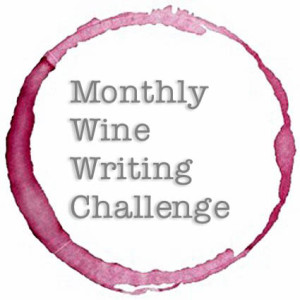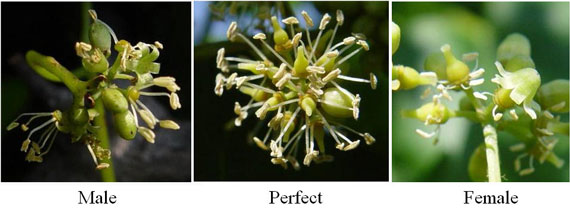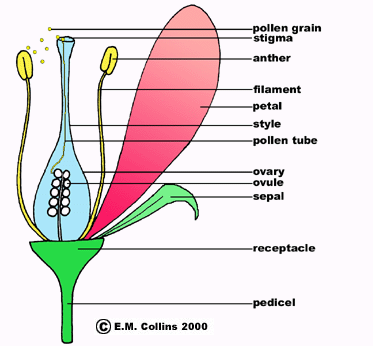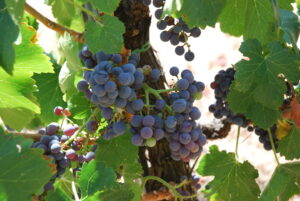Aaron of Wayward Wine won the Monthly Wine Writing Challenge #17 (#MWWC17) and just like all winners of the Challenge, his “reward” was to choose the theme  for the following Challenge (in this case #MWWC18). He chose “Crisis.” I’m not going to lie, it has been a very busy July for me. Mike and I spent 8 days in Paso Robles doing winery work and wine tasting (I know, you feel very sorry for us) and then I was home for 14 hours before I jumped in a car and drove my parents to Cooperstown to watch my nephew play in a baseball tournament for another 6 days. I think Vegas (our weimie) may have thought I’d left forever. So when I saw this theme and its deadline, I was going to go the old “re-post” route and submit my Phylloxera series, but then my conscience got the better of me and talked me into not being lazy. So I decided to sit down and hit the keyboard.
for the following Challenge (in this case #MWWC18). He chose “Crisis.” I’m not going to lie, it has been a very busy July for me. Mike and I spent 8 days in Paso Robles doing winery work and wine tasting (I know, you feel very sorry for us) and then I was home for 14 hours before I jumped in a car and drove my parents to Cooperstown to watch my nephew play in a baseball tournament for another 6 days. I think Vegas (our weimie) may have thought I’d left forever. So when I saw this theme and its deadline, I was going to go the old “re-post” route and submit my Phylloxera series, but then my conscience got the better of me and talked me into not being lazy. So I decided to sit down and hit the keyboard.
Everyone is a wine lover. Well, maybe not everyone, but if you are following my blog or are reading posts submitted for the #MWWC, you are one. You are novinophobic and you are proud of it. Grapes are your thing! You have visions of wine glasses dancing in your head.
Wine making is a beautiful art. It starts in the vineyard and ends in your glass, and there are a lot of times during that process where a crisis can occur. One that is extremely disheartening is shatter. It is tough to come back from shatter. Grape growers and vintners keep their fingers crossed, hold their breath and keep an eye on the weather reports during the critical time of fruit set.
Before I can get into the crisis itself, it is time for a little high school botany refresher course. Flowers can be male, female or perfect. Nearly all Vitis vinifera grape varieties have hermaphroditic (perfect) flowers, containing functional male and female organs. Each of the five stamens (male pollen-bearing organs of the flower), consists of a pollen-producing anther and a filament or stalk. The female pistil consists of a stigma, a style, and an ovary. The stigma serves as the receiver of pollen.

Anthesis is the biological word for bloom. This is when the stamens and pistil are exposed to the environment. This typically occurs about six to eight weeks after shoot growth and is dependent on the weather conditions. Once exposed, the anthers open and release their pollen. The pollen adheres to the sticky stigma at the tip of the pistil. Since grape varieties contain both the male and female reproductive parts, no wind, animals, or insects are needed for pollination. (awesome evolutionary advantage) From there, fertilization may occur. I will not go into the biology of fertilization, I think we all know where babies come from, this is the same basic concept.
Typically, fertilization occurs 2 to 3 days after pollination. Optimum temperatures for fertilization is between 80o and 90oF (26.7o and 32.2oC). These processes are extremely inhibited when temperatures fall below 60o or are higher than 100oF (15.6o and 37.8oC, respectively). This is what is known as fruit set, where the berry diameter is between 1⁄16 and 1⁄8 inch. An individual grape flower cluster may contain hundreds of flowers, however only about 50% of these will set fruit and develop into berries. There can be many causes for the loss of the flower cluster (inflorescence necrosis) and individual flowers (flower necrosis). Some flowers may fall off before bloom, while others may bloom then fall off. Additionally, some flowers may actually set into small berries (shot berries) and fall off before harvest.
This brief window is where the environment plays an extremely important role. A major crisis can occur and the grower and vintner will have to sit back and watch the results unfold.
- Vine vigor status: Vine vigor is most easily thought of as the amount of “green” on the plant. One of the most important things a grape grower is concerned with is vine balance. Too much green, inhibits the fruit and too little green doesn’t provide enough energy for the plant to produce the fruit. Having an unbalanced vine can lead to poor flower development and fruit set. Overly vigorous vines, can out-compete their own clusters for nutritional resources pre-bloom and cause reduced flower development and poor fruit set. A weak vine will have fewer stored resources resulting in weak growth and the vine will pull the resources from the flower causing poor fruit set.
- Weather: Cool, wet or even overcast weather can reduce fruit set. At each stage (floral initiation, development, bloom and fruit set) the weather can reek havoc. Cold and overcast weather prior to bloom leads to problems with floral development. Cold weather during bloom can cause a delay in the blooms development and lead to reduced set. Rain during bloom is the ultimate fear of any grape grower. Rain can physically inhibit pollination and fertilization. Early fall frost, winter cold, heavy wind or hail is so harmful at this stage.
- Damage to vine: At this very fragile time in the grapevine’s life cycle, anything that drastically damages the canopy (greenery) of the vine will lead to poor fruit set. Animals, herbicides, insects, etc. all can cause a crisis when it comes to fertilization and fruit set. Not only can these cause issues impacting fruit set, but they can cause enough disruption to the cycle that the vine may be weaker for the following year.
When the fruit does not set, this is known as “shatter.” A perfect term for this crisis, because the hopes and dreams of a bountiful harvest may be just that – shattered!. In reality, there is always going to be some amount of shatter. It is not feasible that every flower cluster forms into a berry. The vine would never be able to provide nutrition to all of the fruit and ultimately die. As with everything in life, there are varying degrees of shatter. Some are expected. Some are acceptable. While others are devastating. It is a happy day when the grower and vintner can walk through the vineyard and breathe a sigh of relief that their crop has made it through that critical period once again.
Here are a few links to news articles about how the weather and environment have caused crisis in the vineyard:
Freak hail the size of ‘eggs’ destroys crops in Bordeaux weeks after storms wrecked 90 per cent of Burgundy’s vineyards
Valley’s grapes (mostly) undamaged by rain, hail
Winemakers say cold weather has hurt grape crop
Sour Grapes: Bad Weather to Bring Europe Worst Harvest in 50 Years
~Sláinte!



This is just terrific!! I’m studying for my CSW, and have been reading a lot about vineyard pests and problems. You’ve lent this crisis a super first-person narrative. And furthered my vineyard education in the process!! Salud!
Thank you very much. It is so nice to hear that you enjoyed reading it and learned something. Best of luck with your CSW!
Terimakasih banyak atas informasi ini. Saya rasa , infi ini sangat berguna sekali bagi saya baru belajar tentang anggur. Semoga sukses buat anda…Aamiin.
I had to google translate! But thank you so much! I appreciate you taking time to read!